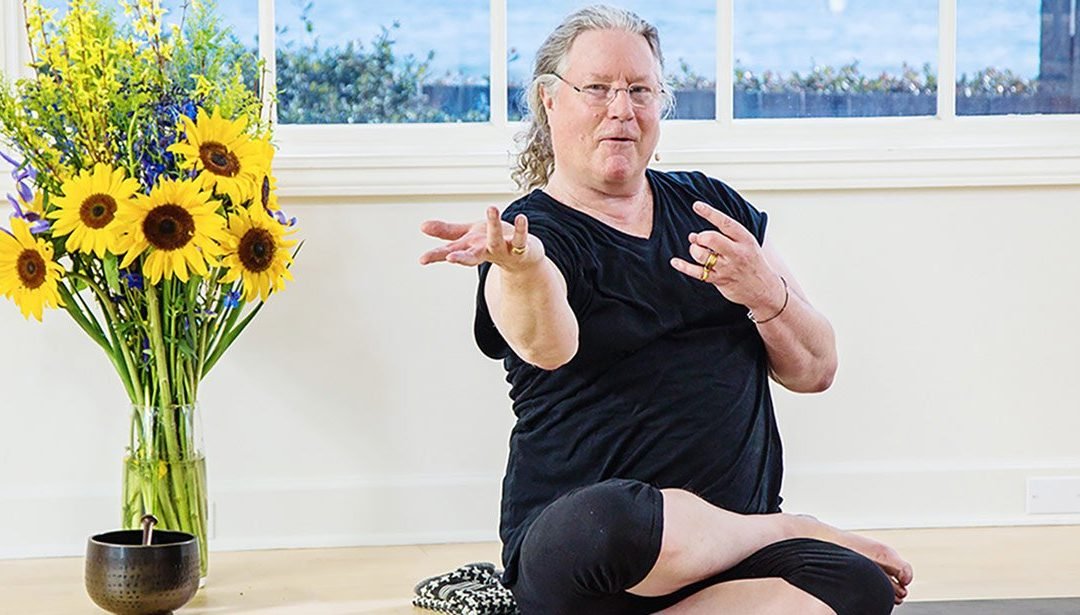Back in the early 2000s I was very much researching Yoga styles and teachers - I was looking for practices that I resonated with. I checked out all sorts of DVDs, spent years reading books, going to workshops, classes and more.
One of the teachers I came across was Erich Schiffmann, a teacher from the USA, lives in California, teachers across the USA and internationally. Back in 1996, he published an awesome Yoga book - Yoga: The Spirit and Practice of Moving into Stillness, which I have loved dipping into for many years for the great wisdom it contains. If you have this book - check out the passages on Savasana (completely inspirational) along with so much other wonderful material. The book is essential for any Yoga library.
I have never met Erich - I hope one day I’ll get a chance. I’ve watched a few videos though - I love the homemade quality of so many of them. There is no pretension at all, no flashiness - he is just himself. Erich teaches what he calls Freedom Yoga - the freedom to teach and practice any style of Yoga he likes! His approach is more tuning in, listening to guidance from within, the inner teacher, and then doing as is prompted.
This encourages and empowers the student to listen and respond to their own body and movement, to practice in a way which respects their body, and how they find themselves at the beginning of each practice. It resonates deeply with me and is very much in line with the pedagogic model for teaching Yoga at Contemporary Yoga, and also with my primary Yoga teacher, Donna Farhi.
In real learning, the student is always gaining increasing degrees of self-reliance, self-confidence and self-responsibility. All teachings should be assessed in terms of the independence it creates.
Donna Farhi
I was recently reminded about Erich’s teaching by a wonderful post by Anne Jablonkski at Shut Up And Yoga, an online space full of great articles and writers. Anne’s piece, Graduate From Imitation To Set Your Yoga Free, is a wonderful intro to Erich’s work and approach. Here’s a sample from the post:
Erich Schiffmann’s discoveries about self-practice have influenced and empowered thousands of yogis teaching and practicing today, culminating in a style he calls Freedom Yoga. This unpretentious teacher has left an enduring mark on a generation of yogis and teachers inspired by his take on making the shift from doing someone else’s yoga to doing your own.
Erich dismisses any notion that the term is proprietary to him. He winces at the idea that anyone might dub it “Schiffmann’s Freedom Yoga.” The term is a shorthand one he fashioned after growing dissatisfied with the elaborate answer he used to give to the “So, what kind of yoga do you teach?” question.
Erich arrived at Freedom Yoga decades after exploring yoga on a long and wandering learning trek that began when he was a teen. His early travels opened doors for extended personal study with legendary yoga and personal transformation teachers as diverse as B.K.S. Iyengar, T.K.V. Desikachar, Jiddu Krishnamurti, Dona Holleman, Vanda Scaravelli, and Joel Kramer.
The Influence Of Joel Kramer
His 1977 encounter with Kramer lit a game-changing spark in discovering his own practice. He learned to sense for the best intensity in each moment, moving into postures in search of what he calls “the line of perfect flow.” In his words, he “finally got how to do yoga” by following guidance from within. With contagious enthusiasm, he’s shared his evolving insights on just that ever since.
Freedom Yoga frames “technique” as a necessary, but temporary and perishable, a stepping stone. The golden treasure beyond mechanical practice is the freedom unleashed from intuitive, intelligent, and continuous deep inner listening that informs each moment, and every decision about what to do next, on the mat. It doesn’t stop there: once it injects fresh life into asana, the sticky mat becomes a training site for experimenting with self-trust in other parts of life.
Trusting Your Inner Authority
First, Freedom Yoga gives asana practice room to blossom. You start to “break the rules,” trust your inner authority and claim greater agency over your practice instead of handing it over to someone else. Once you get the hang of listening to and trusting your inner guidance system with asana and breath, it dawns as self-evident that the same source of intuition guiding where to put your hands in triangle pose — or how much breath effort is right in a backbend — might be trustworthy enough to steer your life off the mat.
Read the full article here on Shut Up And Yoga >>
There’s also a beautiful talk by Erich sharing about his life and approach on YouTube here:
I fully recommend checking out Erich’s work and hope that you receive the benefits of his wisdom and approach.
Neal Ghoshal

